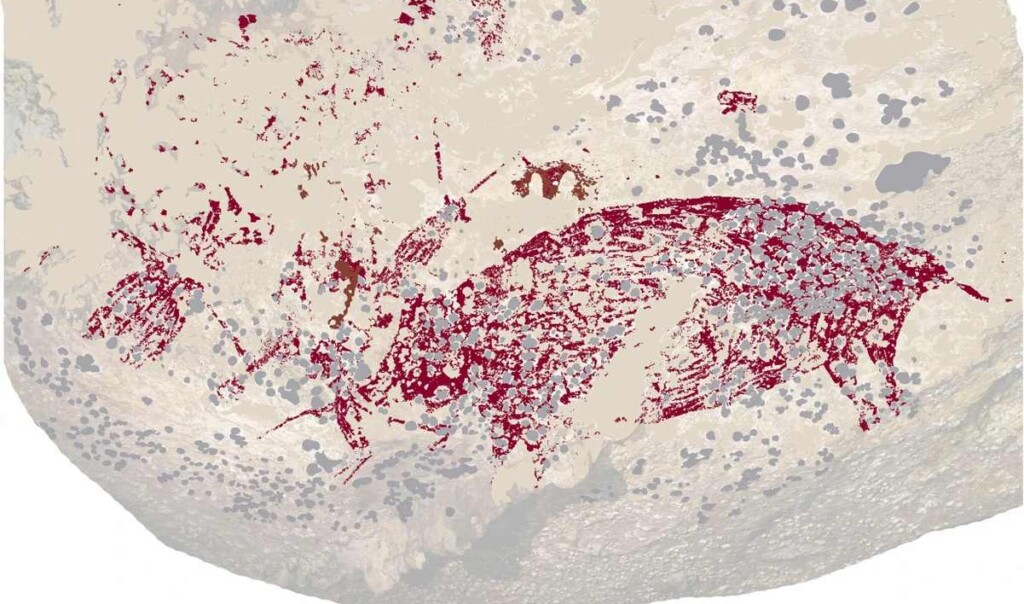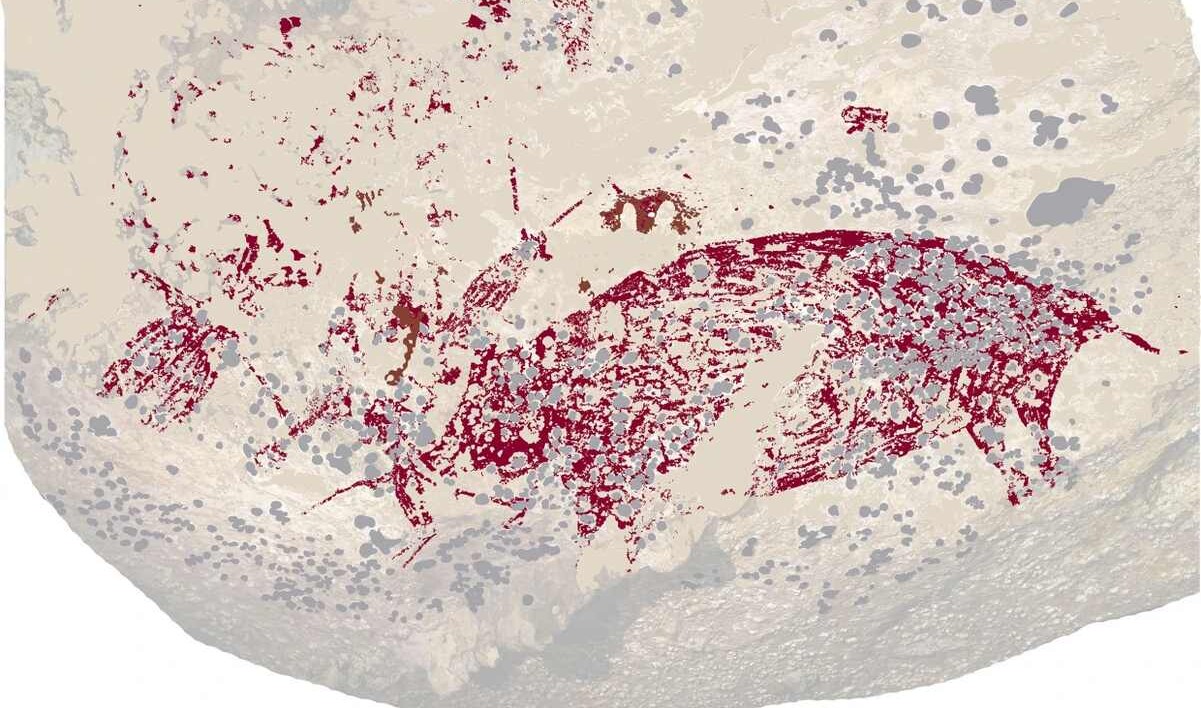
In 2021, GNN reported that a painting of a Sulawesi warty pig on the island of Sulawesi in Indonesia had become the oldest cave painting ever discovered—dating back 45,000 years.
Well not only has that record been broken—with another painting on the same island—but the new discovery also sets the record for the oldest narrative story depicted through art: a hunting scene featuring human-bird hybrids from 49,000 BCE.
The painting was originally discovered in 2017 when scientists at Griffith University in Australia were surveying caves on the eastern Indonesian island of Sulawesi, with the hopes of using a novel method of producing a date called laser-ablation U-series imaging, with the U short for uranium.
The island’s special climate and topography have allowed these cave paintings and the pigments used to create them to survive tens of thousands of years longer than cave art found on other continents like Europe and Australia. Water leaking through the karst rock that forms the cave creates little popcorn-like buttons called calcites which protect the pigments like icing on a sponge cake.
The laser is shined through the calcites and is able to measure the age of the agglomeration of the initial calcite layer—the one closest to the paint. With this technique, the scientists were able to reassess dates in paintings surveyed earlier, producing new estimates that were at times 4,000 years older than previously thought.
What’s come about as a result is that the humans who lived on Sulawesi were practicing painting for purposes of ceremony, rather than for passing time, over 50,000 years ago.
“They were not common living spaces,” Renaud Joannes-Boyau said of the caves, which were difficult to reach.
YOU MAY ALSO APPRECIATE: Australia Returns Huge Daintree Rainforest to its Aboriginal Owners, Bordering Great Barrier Reef
The co-author of the study published Wednesday in the journal Nature, Joannes-Boyau believes that the caves were places where humans would go “for a purpose and is probably linked to some sort of a ceremony.”
The enigmatic scene depicted on the wall is believed to represent a hunting narrative, but one born of imagination rather than reality. The stick figures are what are called in anthropology “therianthropes,” or human-animal hybrids.
MORE CAVE ART STORIES: Newly Discovered Rock Art Panels Depict How Ancient Ancestors Envisioned Creation and Adapted to Change
The figures imply that the artwork reflects imaginative storytelling rather than recording fact, as is believed in the case of some cave art which shows which animals could be hunted in which areas.
“That is something new, something very important, something that happened much older than we thought,” Joannes-Boyau told NBC. “Representation of human figures is already extremely rare, but storytelling of 51,200 years old is even more incredible.”
SHARE This Beautiful Chapter In The Human Story With Your Friends…




















